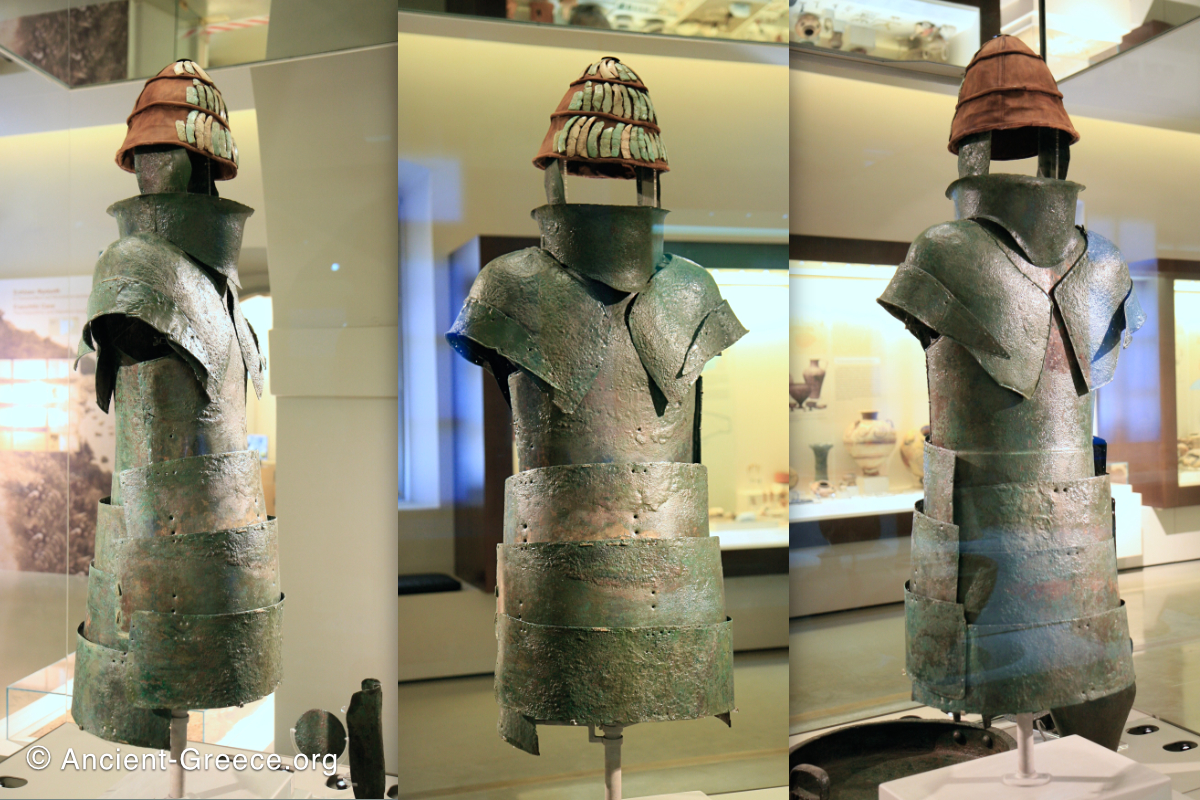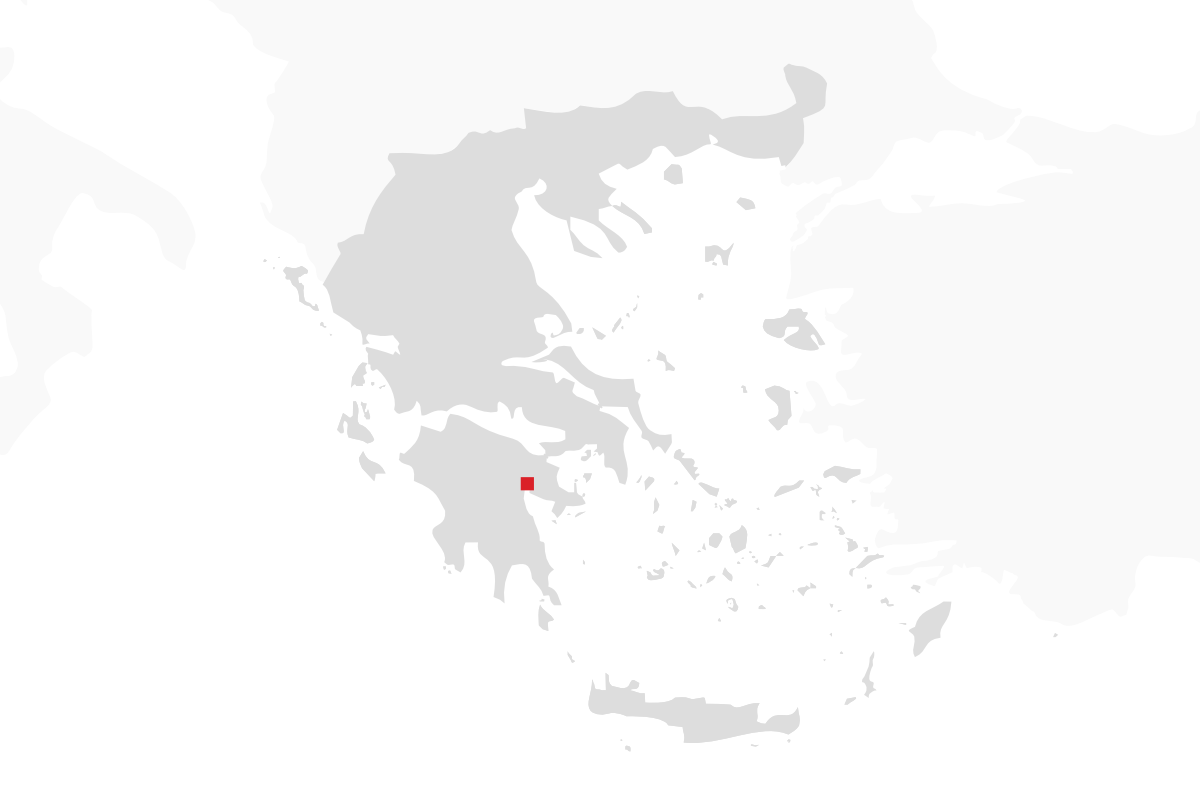
On this page:
Το Αρχαιολογικό Μουσείο Ναυπλίου (The Archaeological Museum of Nafplion, or Nafplio, Nauplio,) is home to objects unearthed in the Argolis area, Peloponnese, Greece.
It exhibits artifacts from excavations in the general Argolis area, including rare Mesolithic objects from the Franchthi cave, contents from several Bronze Age settlements and tombs, as well as later Archaic, Classical, and Hellenistic items.
Highlights include the bronze Dendra Panoply (15c. BCE), artifacts from the Franchthi cave (Mesolithic to Neolithic), items from the excavations at Tiryns (Bronze to Iron Age), and superb examples of ceramics from the stone Age to the 6th c. BCE.
Dendra Panoply
Bronze body armor known as the Dendra Panoply. From the Mycenaean cemetery of Dendra, the cuirass tomb (tomb 12). End of 15 c. BCE.
It includes a boar tooth helmet, similar to the one described by Homer in the Iliad.
Stone Age Artifacts
Objects (Stone arrows, stone and bone tools) from Franchthi Cave. Paleolithic, Mesolithic, and Neolithic – circa 10000-3000 BCE.
Top Left: Middle Neolithic pottery from Franchthi cave. There is evidence that by that time, neolithic man had constructed rudimentary kilns to separate the pots from the fuel to gain more control over the final colors.
Reconstructions of graves of an adult burial from the 18th c. BCE, and a child burial from the Mesolithic era of the Franchthi cave.
Right: Jewelry from the Kazarmas Tholos Tomb. 1500-1450 BCE
Mycenaean Artifacts
Top row, left to right:
- Ceramic vessel from Kazamas Tholos Tomb.1500-1450 BCE
- Ceramic vessels from Kazamas Tholos. Tomb.1500-1450 BCE
- Jewelry from the Kazarmas Tholos Tomb. 1500-1450 BCE
- Alabastron. 1450-1400 BCE
Bottom row, left to right:
- Piriform jar. 1400-1450 BCE
- Sauce-boat from Tiryns. 2700-2200 BCE
- Ceramic jar from Tiryns. 2700-2200 BCE
- Cycladic stone pyxis from Tiryns lower citadel.2200-2000 BCE
- Stucco offering table from Tiryns. 16-14 c. BCE
Archaic Era
Top row, left to right:
- Amphora from Epidauros.. 1075-1050 BCE
- Trefoil-mounted oinochoe from Tiryns cist gave XXIII. 730-690 BCE
- Ceramic fragment with decoration depicting a ship and oarsmen. Tiryns, 730-690 BCE
- Group of ceramic vessels. Late 9th, and 8thc. BCE
Middle row, left to right:
- Amphora from the Geometric period. Tiryns, 850-800 BCE
- Amphora from the Geometric period. Detail. Tiryns, 850-800 BCE
- Tripod amphora from Nafplion, Pronoioa. 730-890 BCE
- Krater with male figures and horses. Tiryns, gave XXIII, 730-690 BCE
- Panathenaic amphora by the Matros Painter. It contained the oil won as the prize in the Panathenaic games. One side depicts Athena Promachos flanked by Doric columns with cockerels on them, and an inscription indicating “The Prize from Athens”. The side visible here depicts the reception of a jockey and his horse–probably the winner of an event at the games. 530-520 BCE
Bottom row, Left to right:
- Bronze statuette of female figure, from Asine. 750-690 BCE
- Clay votive shield from Tiryns, upper citadel. Front. 7th c. BCE
- Clay votive shield from Tiryns, upper citadel. Back. 7th c. BCE
- Ceremonial masks from Tiryns upper citadel. Terracotta, 7th c. BCE
- Doric capital from Tiryns, upper citadel.
7th c. BCE
Classical and Hellenistic
Three views of a white ground lekythos with drawing depicting a visit at the grave. 420-410 BCE.
Dancing woman clay statuette (right). 3d c. BCE
Other Artifacts
Top row left to right: Three bronze helmets
- Corinthian type bronze helmet. 525-500 BCE
- Corinthian type bronze helmet. 525-500 BCE
- Bronze helmet from Tiryns, grave XXVIII. 1050-1025 BCE
Middle row left to right:
- Linear B tablets dealing with land-tenure.
Tiryns, lower citadel, 13th-12th c. BCE - Marble mortar and pestle from Tiryns lower citadel. 2700-2200 BCE
- Bronze chisels. 1350-1250 BCE
- Bronze tools including: tongs and saw. 1350-1250 BCE
Bottom row left to right:
- Glass vessels from the Ancient Epidauros necropolis. 1st c. CE
- Iron tools: sickle, ard (plough), chain and nails. 550-650 CE
- Bronze cooking pot. Circa 500 BCE
- Fragment from Attic krater inscribed “ΑΘΑΝΑΙΑΣ ΕΜΙ” (I belong to Athena). 6th c. BCE




















































